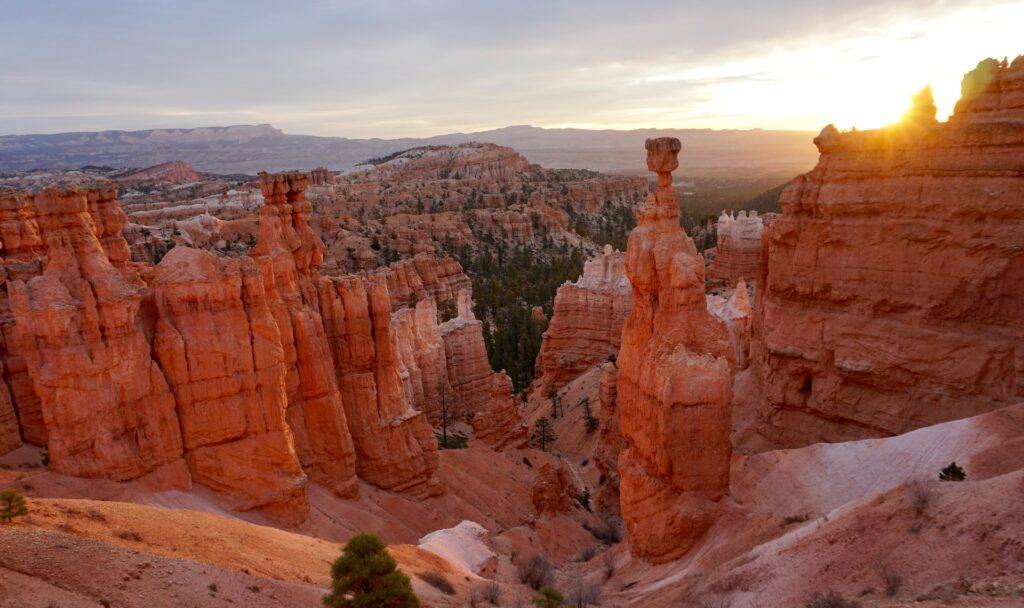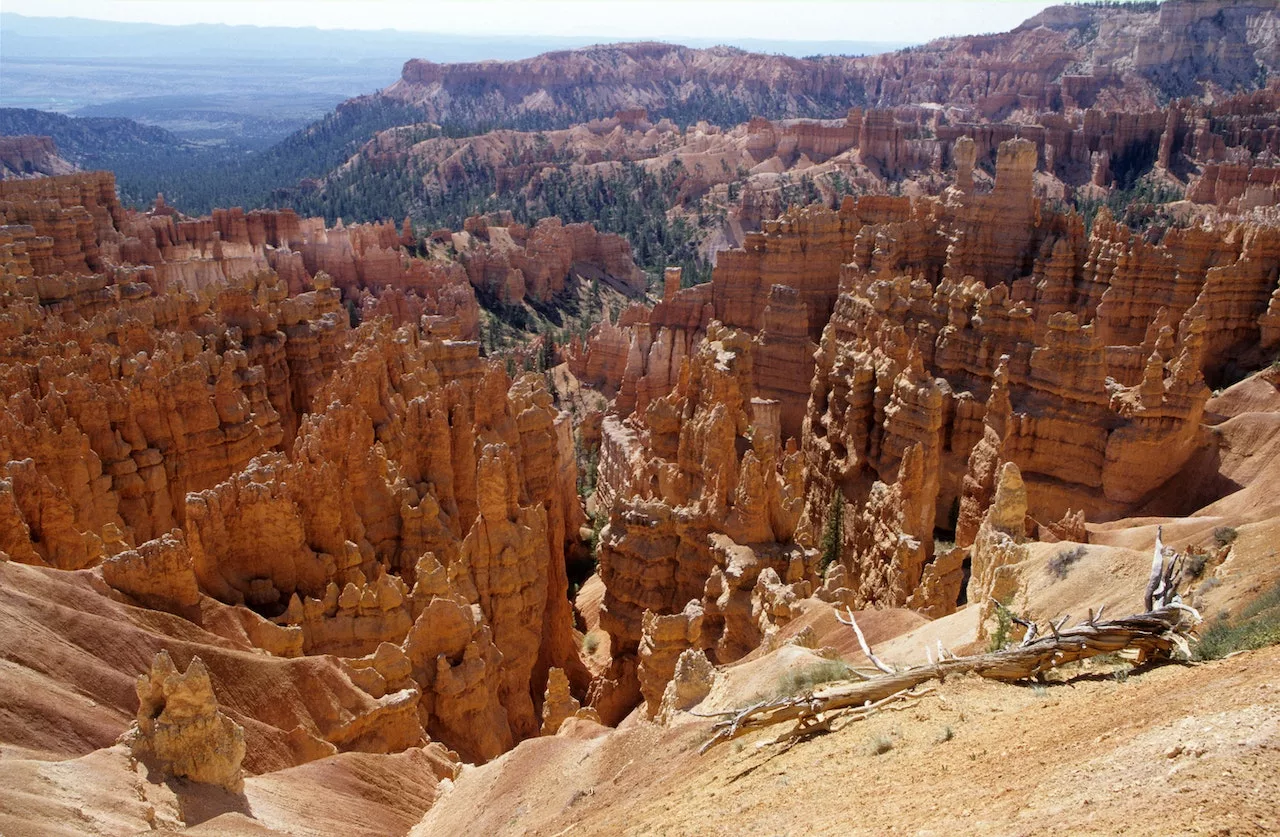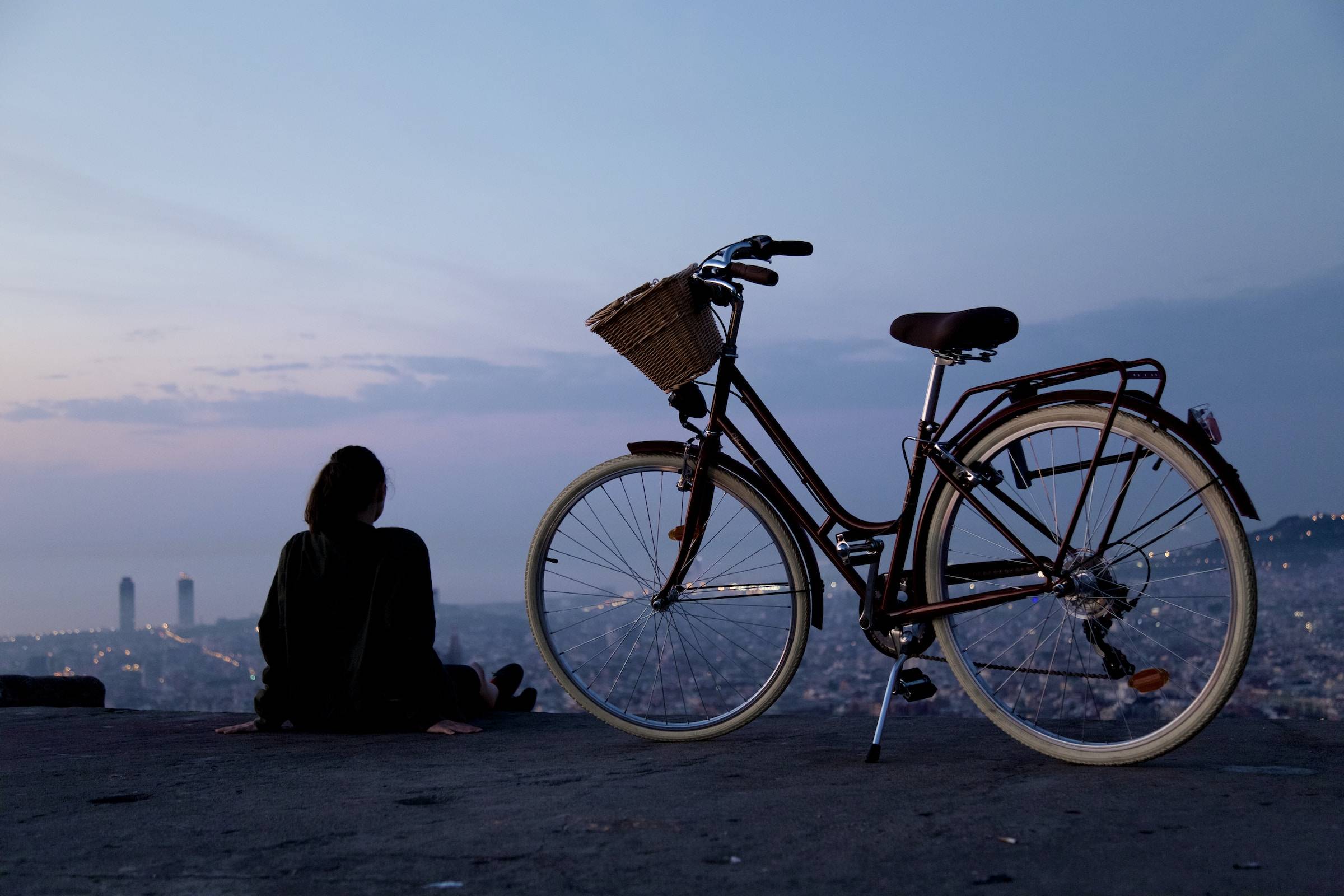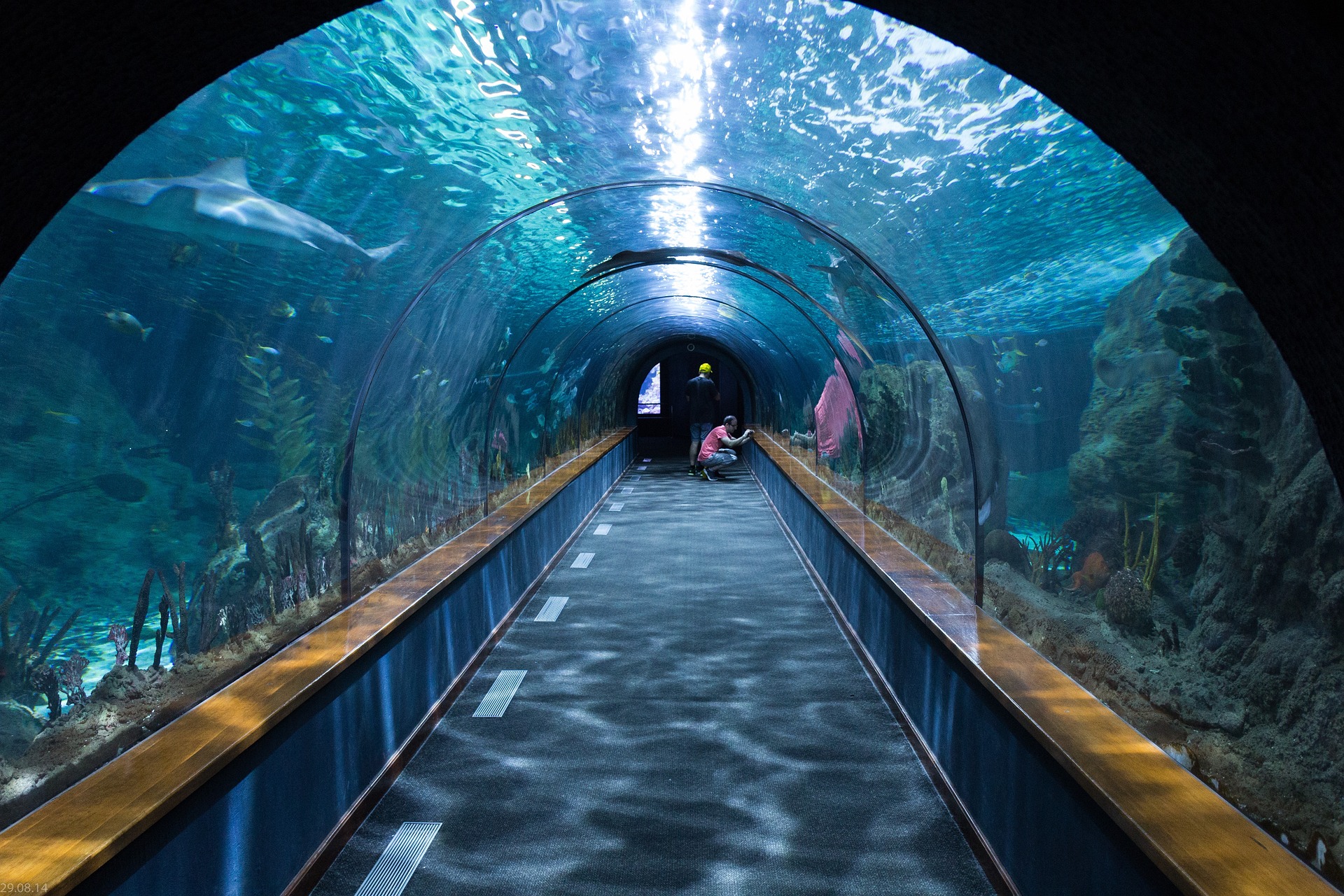Bryce Canyon National Park is home to some of the most unique and beautiful rock formations in the world, the hoodoos. These tall, slender pillars of rock are formed by a process of weathering and erosion that has been taking place over millions of years.
You might also like our “Lodging near Bryce Canyon: From Hotels to Unique Stays in 2023” post
What are hoodoos?
Hoodoos are tall, slender pillars of rock that are formed by the erosion of softer rock layers from around a harder core. The hoodoos in Bryce Canyon are made of a type of rock called Claron limestone, which is a soft rock that is easily eroded by water and wind.
How were the hoodoos of Bryce Canyon formed?
The hoodoos of Bryce Canyon were formed over millions of years by a process called differential weathering. Differential weathering is the process by which different rock layers erode at different rates. In the case of the hoodoos, the softer rock layers around the harder core erode away, leaving the core standing as a hoodoo.

Where are they located?
The hoodoos of Bryce Canyon are found in the northern part of the park. The most famous hoodoo area is the Bryce Amphitheater, which is a large amphitheater-shaped valley that is filled with hoodoos.
How many of them are in Bryce Canyon?
There are an estimated 2,000 hoodoos in Bryce Canyon National Park. The largest hoodoo is the Thor’s Hammer, which is about 150 feet tall.
Why are the hoodoos in Bryce Canyon red?
The hoodoos in Bryce Canyon are red because they are made of Claron limestone, which is a type of rock that contains a lot of iron oxide. The iron oxide gives the rock its red color.
Why are hoodoos prominent at Bryce Canyon?
This is due to the fact that Bryce Canyon is located in an arid climate. The lack of water in the air helps to slow down the process of erosion, which allows the hoodoos to survive for millions of years.
How tall are the hoodoos in Bryce Canyon?
The hoodoos in Bryce Canyon range in height from a few feet to over 150 feet tall. The tallest hoodoo in the park is the Thor’s Hammer, which is about 150 feet tall.
What are the hoodoos in Bryce Canyon made of?
The hoodoos in Bryce Canyon are made of a type of rock called Claron limestone. Claron limestone is a soft rock that is easily eroded by water and wind.
Why will the hoodoos of Bryce Canyon not last forever?
The hoodoos of Bryce Canyon will not last forever because they are constantly being eroded by water and wind. Over time, the hoodoos will get smaller and smaller until they eventually disappear.
Where to photograph this natural wonder?
There are many great places to photograph hoodoos in Bryce Canyon. Some of the most popular spots include:
- Inspiration Point
- Sunset Point
- Sunrise Point
- The Navajo Loop Trail
- The Queen’s Garden Trail
Tips for photographing hoodoos
Here are a few tips for photographing hoodoos in Bryce Canyon:
- Use a wide-angle lens to capture the full size of the hoodoos.
- Shoot at sunrise or sunset when the light is soft and the colors are more vibrant.
- Use a tripod to avoid camera shake.
- Experiment with different compositions to find the most interesting shot.
Other Activities
The park offers an array of activities to suit all interests and fitness levels, including:
- Scenic drives along the 18-mile Bryce Canyon Scenic Drive
- Horseback riding through the stunning landscape
- Stargazing at one of the best night sky observation spots in the United States
- Hiking on a variety of trails, from short, easy walks to more challenging backcountry adventures
- Some popular trails and viewpoints in Bryce Canyon include the Navajo Loop, Queen’s Garden Trail, Sunrise Point, and Sunset Point.
When to Visit
The optimal time to visit Bryce Canyon is during the shoulder seasons (spring and fall), when the weather is pleasant, and crowds are smaller. If you plan to visit during the peak summer season or the snowy winter months, be sure to book your accommodations well in advance to secure your preferred lodging near Bryce Canyon.
Bryce Canyon Hidden Gems: Trails and Paths
While Bryce Canyon National Park is famous for its iconic landmarks, there are many lesser-known spots that are worth exploring. These hidden gems will offer you a more peaceful and less crowded experience:
Mossy Cave Trail: A short, easy hike that leads to a unique cave formation covered in moss, along with a waterfall and hoodoos.
The Fairyland Loop: A quieter, scenic alternative to the more popular Navajo Loop and Queen’s Garden Trails. This 8-mile loop offers stunning views of the Bryce Amphitheater.
Tropic Reservoir: A picturesque alpine lake located near the park, perfect for fishing, camping, and exploring the surrounding Dixie National Forest.
Yovimpa Point: A less frequented viewpoint in the southern part of the park, offering panoramic vistas of the Grand Staircase-Escalante National Monument and the Kaibab Plateau.
Riggs Spring Loop Trail: A moderately difficult, less-crowded trail that takes you through forests and meadows, offering views of hoodoos and red rock formations.
Final Thoughts
The hoodoos of Bryce Canyon are a natural wonder that is sure to amaze visitors of all ages. These unique rock formations are a testament to the power of nature and the beauty of the American West.
FAQ
What are the different types of hoodoos?
There are three main types of hoodoos:
- Single-column hoodoos: These are the most common type of hoodoo. They are formed when a single column of rock is left standing after the surrounding rock has eroded away.
- Clustered hoodoos: These are formed when a group of single-column hoodoos are close together.
- Towering hoodoos: These are the tallest type of hoodoo. They are formed when a single column of rock is very tall and narrow.
How old are the hoodoos in Bryce Canyon?
The hoodoos in Bryce Canyon are thought to be millions of years old. They were formed by a process of differential weathering, in which different rock layers erode at different rates.
What is the best time of year to visit Bryce Canyon to see the hoodoos?
The best time of year to visit Bryce Canyon to see the hoodoos is during the spring (April-May) or fall (September-October). The weather is mild during these months, and the crowds are smaller than during the summer.
How can I help protect the hoodoos in Bryce Canyon?
There are a few things you can do to help protect the hoodoos in Bryce Canyon:
- Stay on the trails.
- Don’t climb on the hoodoos.
- Be careful not to drop anything that could damage the hoodoos.
- Report any vandalism to the park rangers.



